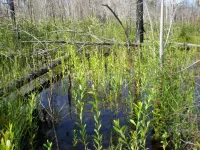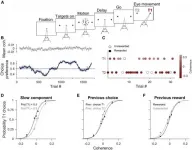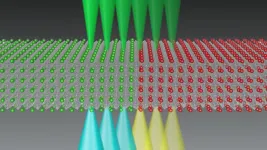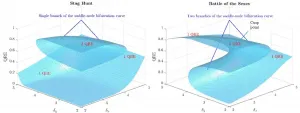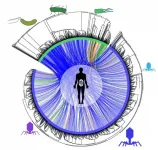A CNIO team discovers how telomere involvement in tumor generation is regulated
The results show for the first time that telomeres respond to external signals that induce cell proliferation and that blocking these signals can interfere with cancer cells becoming immortal
2021-03-10
(Press-News.org) The Telomeres and Telomerase Group led by Maria A. Blasco at the Spanish National Cancer Research Centre (CNIO) continues to make progress in unravelling the role that telomeres -the ends of chromosomes that are responsible for cellular ageing as they shorten- play in cancer. The CNIO team was among the first to propose that shelterins, proteins that wrap around telomeres and act as a protective shield, might be therapeutic targets for cancer treatment. Subsequently, they found that eliminating one of these shelterins, TRF1, blocks the initiation and progression of lung cancer and glioblastoma in mouse models and prevents glioblastoma stem cells from forming secondary tumours. Now, in a study published in PLOS Genetics, they go one step further and describe for the first time how telomeres can be regulated by signals outside the cell that induce cell proliferation and have been implicated in cancer. The finding opens the door to new therapeutic possibilities targeting telomeres to help treat cancer.
The CNIO group was also the first to find a link between TRF1 and the PI3K/AKT signalling pathway. This metabolic pathway, which also encompasses mTOR, is one of the pathways most frequently affected in numerous tumorigenic processes. However, it was not known whether preventing TRF1 regulation by this pathway can have an impact on telomere length and its ability to form tumours. AKT acts as a transmitter of extracellular signals triggered by, among others, nutrients, growth factors and immune regulators, to the interior of cells. CNIO researchers Raúl Sánchez and Paula Martínez, directed by Maria A Blasco, set out to determine the involvement of telomeres in this signalling pathway.
To do this, the researchers modified the TRF1 protein in cells to make it unresponsive to AKT, using the gene-editing tool CRISPR/Cas9. This way, TRF1 and the telomeres became invisible to any extracellular signals transmitted by AKT. Telomeres in these cells shortened and accumulated more damage; most importantly, the cells were no longer able to form tumours, indicating that telomeres are important targets of AKT and its role in cancer development.
"Most importantly, we found that when TRF1 can't be phosphorylated by AKT, the latter has a lower potential to generate tumours," explains Blasco.
The paper shows that telomeres are among the most important intracellular targets of the AKT pathway to form tumours, since, although neither the function of AKT nor of any of the thousands of proteins that are regulated by it was altered, only blocking AKT's ability to modify telomeres was sufficient to slow tumour growth.
The next step will be to generate genetically modified mice with telomeres that are invisible to AKT. The authors anticipate that these mice will be more resistant to cancer.
INFORMATION:
The study was funded by the Spanish Ministry of Science and Innovation, the Carlos III Health Institute, the Spanish State Research Agency, the European Research Council, the European Regional Development Fund, the Autonomous Community of Madrid, the Botín Foundation and Banco Santander through Santander Universities, and World Cancer Research.
Reference Article: AKT-dependent signaling of extracellular cues through telomeres impact on tumorigenesis. Raúl Sánchez-Vázquez, Paula Martínez, Maria A. Blasco (PLOS Genetics, 2021). DOI: doi.org/10.1371/journal.pgen.1009410
[Attachments] See images for this press release:
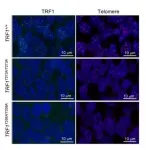
ELSE PRESS RELEASES FROM THIS DATE:
2021-03-10
People with aphantasia - that is, the inability to visualise mental images - are harder to spook with scary stories, a new UNSW Sydney study shows.
The study, published today in Proceedings of the Royal Society B, tested how aphantasic people reacted to reading distressing scenarios, like being chased by a shark, falling off a cliff, or being in a plane that's about to crash.
The researchers were able to physically measure each participant's fear response by monitoring changing skin conductivity levels - in other words, how much the story made a person sweat. This type of test is commonly ...
2021-03-10
WESTMINSTER, Colorado - March 10, 2021 - The paperbark tree (Melaleuca quinquenervia) was introduced to the U.S. from Australia in the 1900s. Unfortunately, it went on to become a weedy invader that has dominated natural landscapes across southern Florida, including the fragile wetlands of the Everglades.
According to an article in the journal END ...
2021-03-10
ften, humans display biases, i.e., unconscious tendencies towards a type of decision. Despite decades of study, we are yet to discover why biases are so persistent in all types of decisions. "Biases can help us make better decisions when we use them correctly in an action that has previously given us great reward. However, in other cases, biases can play against us, such as when we repeat actions in situations when it would be better not to", says Rubén Moreno Bote, coordinator of the UPF Theoretical and Cognitive Neuroscience Laboratory.
In these cases, decisions are guided by tendencies, or inclinations, that do not benefit our wellbeing. For example, playing the lottery more regularly after winning ...
2021-03-10
Recent studies estimate that we use an astounding 129 billion face masks globally every month - that is 3 million a minute. Most of them are disposable face masks made from plastic microfibers.
- With increasing reports on inappropriate disposal of masks, it is urgent to recognize this potential environmental threat and prevent it from becoming the next plastic problem, researchers warn in a comment in the scientific journal Frontiers of Environmental Science & Engineering.
The researchers are Environmental Toxicologist Elvis Genbo Xu from University of Southern Denmark and Professor of Civil and Environmental Engineering ...
2021-03-10
Global targets to improve the welfare of people across the planet will have mixed impacts on the world's forests, according to new research.
The United Nations' 17 key areas for global development - known as the Sustainable Development Goals (SDGs) - range from tackling poverty, hunger and sanitation to promoting clean energy, economic growth and reducing inequality.
Many of these goals, such as improved peace and justice, good health and wellbeing, and quality education, will have a positive impact on the Earth's natural forests.
But others, including creating new roads, industry and infrastructure, ...
2021-03-10
Nearly 100 percent of the red snapper sampled in the Gulf of Mexico over a six-year period by University of South Florida (USF) marine scientists showed evidence of liver damage, according to a study reported in Aquatic Toxicology.
The study is the first to correlate the concentration of crude oil found in the workhorses of the digestive system -- the liver, gall bladder, and bile - with microscopic indicators of disease, such as inflammation, degenerative lesions, and the presence of parasites. The team sampled nearly 570 fish from 72 Gulf locations between 2011 to 2017 in the wake of the historic 2010 Deepwater Horizon oil spill.
"The results add to the list of other species we've analyzed indicating early warning ...
2021-03-10
In a breakthrough for quantum computing, University of Chicago researchers have sent entangled qubit states through a communication cable linking one quantum network node to a second node.
The researchers, based in the Pritzker School of Molecular Engineering (PME) at the University of Chicago, also amplified an entangled state via the same cable first by using the cable to entangle two qubits in each of two nodes, then entangling these qubits further with other qubits in the nodes.
The results, published February 24, 2021 in Nature, could help make quantum computing more feasible and could lay the groundwork for future quantum communication networks.
"Developing methods that ...
2021-03-10
"Phase transitions" are a central phenomenon in physical sciences. Despite being technical-sounding, they are actually something we all experience in everyday life: ice melting into liquid water, or hot water evaporating as steam. Solid, liquid, and gas are three well known "phases" and, when one turns into another, that is a phase transition.
Rare-earth nickelate oxides, also called nickelates, have attracted a lot of interest from researchers because they display an electronic phase transition, which may be exploited in future electronic devices. This particular phase transition consists of turning from a metallic ...
2021-03-10
Game theory is known to be a useful tool in the study of Machine Learning (ML) and Artificial Intelligence (AI) Multi-Agent interactions.
One basic component of these ML and AI systems is the exploration-exploitation trade-off, a fundamental dilemma between taking a risk with new actions in the quest for more information about the environment (exploration) and repeatedly selecting actions that result in the current maximum reward or (exploitation).
However, the outcome of the exploration-exploitation process is often unpredictable in practice and ...
2021-03-10
The balance of human intestinal microbiota, consisting of hundreds of bacterial species and phages (bacteria viruses), is crucial to good health. A research team, including scientists from the CNRS* and the Institut Pasteur, has characterised the phage-bacterial interaction networks of the microbiota in ten healthy individuals, with unprecedented precision. Scientists detected several hundred bacterial and phage genomes and identified the thousands of interactions that bind them by quantifying the contacts between the DNA molecules of viruses and their hosts. This method has the advantage ...
LAST 30 PRESS RELEASES:
[Press-News.org] A CNIO team discovers how telomere involvement in tumor generation is regulated
The results show for the first time that telomeres respond to external signals that induce cell proliferation and that blocking these signals can interfere with cancer cells becoming immortal


